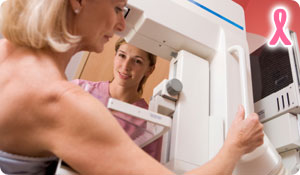
In July 2009, BMJ (formerly the British Medical Journal) reported that breast cancer is over-diagnosed and is correlated to the increase of breast cancer incidence in some communities. According to this study, physicians over-diagnose one in three breast cancers.
So, what does an "over-diagnosis" actually mean?
Screening detects cancers that are both lethal and harmless. A harmless cancer is one that would not cause death or symptoms, or would not have been identified clinically during a person's remaining lifetime. Since physicians cannot yet distinguish between lethal and harmless cancers, they treat all of them. As one physician said, doctors apply interventions to a large number of healthy women to benefit the few who do actually develop breast cancer.
Furthermore, while mammograms detect cancers, they also produce false positives (showing an abnormality when it doesn't actually exist). This creates anxiety for women and leads to unnecessary biopsies. Like any medical procedure, biopsies have risks.
The results in BMJ support earlier studies. For example, one study showed that repeated screening mammograms starting at age 50 saves about 1.8 lives over 15 years for every 1,000 women screened. The absolute death risk from breast cancer without screening is one percent over those 15 years. Put another way, the survival rate of the women not screened is 99 percent.
A similar study showed that if 2,000 women receive mammograms over 10 years, one women's life will be prolonged, 10 healthy women will be treated unnecessarily for breast cancer, and 200 women will undergo psychological distress and additional testing because of a false positive.
There's a push among some physicians and patient advocates to provide a more balanced view of mammography--to present both the benefits and the potential harms, including false positives, anxiety, unnecessary biopsies and over diagnosis. This does not currently happen. Physicians admit they only discussed the potential harms of mammograms seven percent of the time.
Scientists are finding new and improved detection and diagnostic tools that will help physicians eventually distinguish between malignant and benign lesions. This should reduce the number of unnecessary procedures. In the meantime, ask your physician to discuss the pros and cons of mammograms so you can make an informed decision for yourself.
Sources
http://www.medscape.com/viewarticle/701965
http://www.bmj.com/cgi/reprint/339/jul09_1/b2587
http://www.medscape.com/viewarticle/590535
http://www.medscape.com/viewarticle/708231
http://www.medscape.com/viewarticle/575957
http://www.medscape.com/viewarticle/702282
http://medicalconsumers.org/2009/03/01/make-an-informed-decision-about-mammography/





